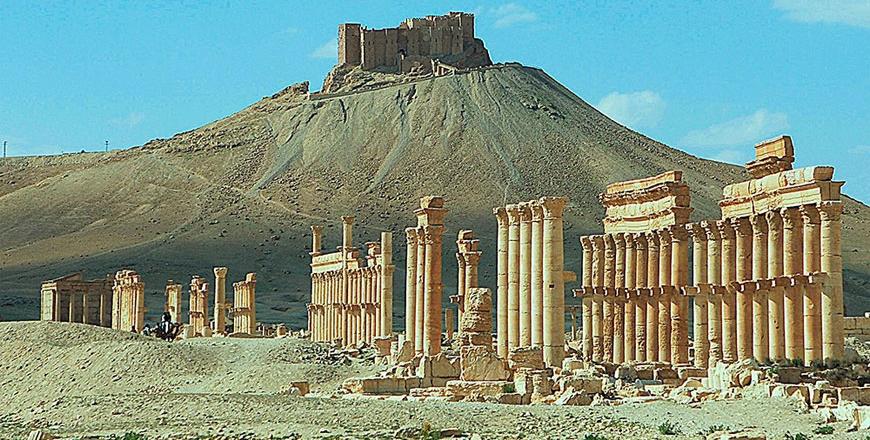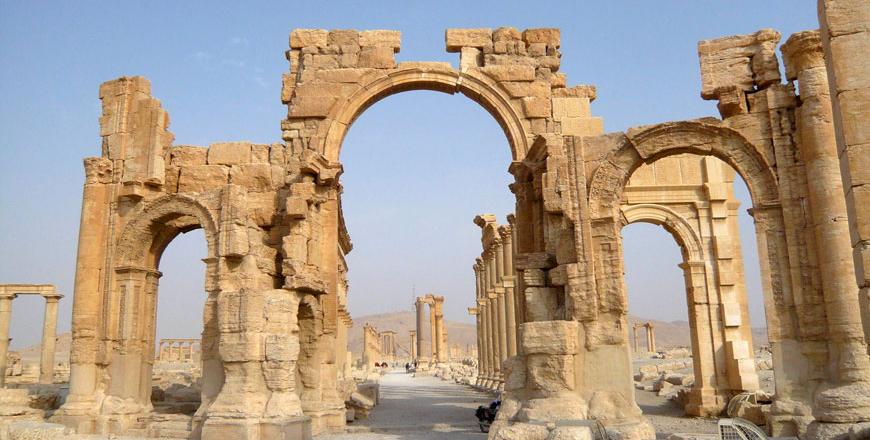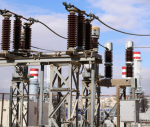You are here
Destruction of ancient Syrian ruins
By AFP - Sep 01,2015 - Last updated at Sep 01,2015

This undated image released by UNESCO shows the site of the ancient city of Palmyra in Syria (AP photo)
BEIRUT — Here is a roundup of major Syrian historical sites or monuments that have been destroyed by all sides in the country's crisis.
According to the Association for the Protection of Syrian Archeology (APSA), more than 900 monuments and archeological sites have been looted, damaged or destroyed.
Referring to satellite images, the United Nations said in December that 300 sites had been plundered, damaged or destroyed.
Palmyra
The UN training and research agency UNITAR has said satellite images "confirm the destruction of the main Temple of Bel as well as a row of columns in its immediate vicinity".
That was the second temple in Palmyra to be destroyed by the Daesh terror group in a week, following one in Baalshamin.
In July, Daesh destroyed the statue of the Lion of Athena, which stood more than three metres high in front of the Palmyra museum. Daesh transformed the museum into a court and jail.
On August 18, Daesh murdered the 82-year-old retired head of antiquities in Palmyra, Khaled Al Assad, hung his mutilated body in public.
Daesh condemns pre-Islamic religious works as idolatry and has targeted Palmyra, which is northeast of Damascus, for destruction. The city has been listed as a world heritage site by UNESCO.
The city sustained damage in 2013 during fighting between rebels and government forces, and troops did additional harm there last year.
Aleppo
The historic centre of Aleppo, northern Syria, is divided between rebels and loyalists. In September 2012, a blaze swept through ancient shops in the city's souk, or market place, and in April 2013, the minaret of the historic Omayyades mosque collapsed during fierce fighting.
Rebels using explosives to reach government positions in the old city destroyed the iconic Carlton Hotel on May 8, 2014.
In July 2015, a blast destroyed part of the ramparts that surround the citadel, a leading example of medieval Islamic military architecture. The Syrian Observatory for Human Rights said rebels had dug a tunnel under the wall, and that government troops blew it up to protect their positions.
Al Karaj
A heavily fortified Crusader citadel known as the Crax sed Chevaliers and used as a rebel base near Homs, central Syria, has suffered damage from army shelling.
Maaret Al Numan
On June 20, 2015, the best-known mosaic museum in Syria was seriously damaged by barrel bombs launched by regime aircraft, APSA said.
Raqqa
In this northern Daesh bastion, much of the Sufi Muslim Uwais Al Qarani Mosque and a shrine to Ammar Bin Yasir, a companion of Prophet Mohammad, was destroyed, with non-governmental organisations pointing the finger at Daesh.
In the northeastern region of Hassake, Daesh has also destroyed Assyrian statues dating from the first century, APSA said.
Other notable sites damaged or looted include Dura-Europos, Apamea, Ebla, Mari, Ajaja and Hamam Turkoman.
Related Articles
BEIRUT — A powerful blast in the ruins of Syria's ancient Palmyra raised fears Monday that the Daesh terror group has damaged another of the
PARIS — UNESCO on Friday condemned the destruction by Daesh militants of antiquities in the Syrian city of Palmyra, describing it as an atte
TAL AJAJA, Syria — When the Daesh terror group captured Tal Ajaja, one of Syria's most important Assyrian-era sites, they discovered previou


















